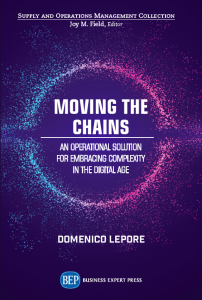
A recent article in a magazine for CEOs posed the question, who should work remotely?
“As we slowly emerge from the pandemic and the resulting stay-at-home orders, organizational leaders need to make difficult decisions on who will—and won’t—be required to return to the office. With study after study showing that most employees are not interested in returning full time, pre-pandemic policies won’t cut it.”
The author identifies a set of implicit biases in the decisions about who can work remotely:
- The belief that lower-level work must be more closely observed to be productive.
- The notion that flexibility is a perk to be earned.
- The idea that leaders are somehow better suited to be responsible about being productive than others.
In the Theory of Constraints, we refer to these biases as “Assumptions”. They are mental models and we would certainly want to challenge them.
The problem is, how do challenge deep-rooted assumptions, or mental models? How do we get past our limiting beliefs to find a better solution , instead of just repeating a “command and control” model from an industrial age that is no longer adequate or even appropriate?
If we truly want to solve the issue of establishing an effective way to decide who works in the office and who works from home, we need to alter the framework of how we perceive the problem.
It’s worth mentioning a powerful example of changing our point of reference in this quote from NASA astronaut, Reid Wiseman:
While spacewalking I realized something: I used to think I was scared of heights but now I know I was just scared of gravity.
What is work?
How do we alter the framework of how we perceive the problem of who should work remotely? We can’t leave the planet, as Wiseman did, but we can step back by asking some deep questions. We have to find a way to forgo a command and control management style but, at the same time, have a powerful mechanism to ensure that activities are properly coordinated and everybody is accountable.
At Intelligent Management, asking this question led us to look at the fundamental elements that make up the work of an organization. Just as the key constituents of life are hydrogen, oxygen, carbon, nitrogen, phosphorus, and sulphur, we realized that the basic constituents of work are repetitive processes and one-off projects. At this point, a new organizational design emerged, based on the management of a complex, strongly interconnected and synchronized Network of (processes and) Projects.
What is a company?
At Intelligent Management, we see clearly that organizations and companies are systems, and that means that they are a network of interdependent components that work together to accomplish the aim of the system.
Over the years, we have come to understand how companies can unlock the potential of everyone in their organization by building the organization as a directed and synchronized Network of Projects. This involves mapping competencies needed for projects and scheduling those competencies instead of resources. As some resources have several competencies, this allows for much greater flexibility in scheduling projects and allows people to work more meaningfully by contributing all of their abilities and talents towards a common goal. When work is well designed to accelerate flow, when artificial barriers are removed and people can contribute with all their abilities, we can build not just a future but a better future of work.
We can much more easily decide who can work remotely because we understand the interdependencies. It becomes clear who needs to do what and when. We don’t need to control the individual by making them sit at a desk in an office for a certain number of hours. We control the interdependencies. This is why we built Ess3ntial – to provide a digital tool where all the competencies are on one platform and can be synchronized as a Network of Projects using a powerful algorithm based on Critical Chain. (see www.ess3ntial.com)
A practical support for work from home
Today marks the tenth anniversary of the passing of Dr. Eliyahu Goldratt who developed the Theory of Constraints. It seems the most appropriate moment to mention that we have been able to switch from working onsite to working remotely with great ease thanks to years of consolidated practice using the Thinking Processes from the Theory of Constraints. People always want practical solutions. This is yet further proof that nothing is more practical than a good theory.
We would urge anyone seeking to collaborate on projects at a distance to explore the Thinking Processes. Not only do they provide a visual approach that is easily shared and easy to consult, they actively promote people’s ability to thinking systemically about problems and how to overcome them. They provide a catalyst for focus and reduce dramatically the time that people spend in meetings.
Contact: intelligentmanagement@sechel.ws
SCHEDULE AN INTRODUCTORY CALL WITH US







Leave a Reply